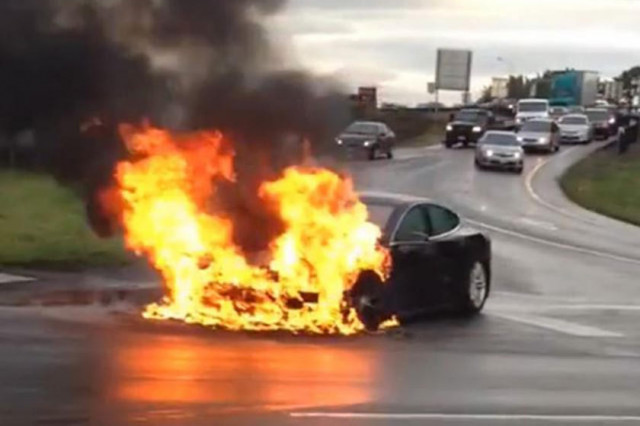Dr. Rahul Walawalkar, President - IESA
Dr. Walawalkar express that it is a great benefit to India that thought leaders like UL chose to partner with IESA in 2016, where IESA and UL signed an MOU for developing a safety roadmap for stationary storage in India. Based on this, a draft standard was presented to BIS at the first meeting. "This was thanks to detailed input gathered by UL and IESA. We now need to focus on something similar for EVs and other battery devices."
Speaking about safety issues of EV batteries, he said: "There are no shortcuts or easy solutions available for battery safety. Battery fires happen with every chemistry and also in every country, not just in India due to high summer temperatures. Incidents take place with very established and experienced companies as well. It is a common industry issue and we need to address it systematically and educate all stakeholders. Ultimately there are no shortcuts, and safety needs to be addressed at multiple levels."
"This is a joint responsibility and is not about just one company. Any company having a problem can affect the market for all. We can solve the issue by working together and making safety and standards of batteries a common goal."
Dr. Judy Jeevarajan, VP & Executive Director - Electrochemical Safety Research Institute, Underwriters Laboratories Inc.
Speaking about the development of standards for e-mobility, Dr. Jeevarajan said that every Li-ion battery, whether single-cell or multi-cell, should have a smart circuit board that monitors not only the voltages, currents, and temperature, but also controls the battery within the specifications that it needs to be. She explained some of the things the BMS needs to know, especially when you are looking at it within an e-mobility system; these are - the model number, the manufacturer of the battery, and the date code.
Stressing on the importance of an efficient BMS, she said the BMS should understand the cell chemistry, the cell and battery capacity; the cell and battery upper and lower voltage limits, the maximum current limits, and the maximum and minimum temperature limits. The state of charge and the state of health should be understood, and the BMS should also have a history of the number of cycles that the battery has undertaken, she added.
Stringent cell screening should be carried out both at the cell and the manufacturing facilities under very strict criteria, she cautioned. "Cells should be screened and also matched before they are assembled into batteries. They should be tested later in their battery configurations and also the cells and batteries should be used within their specifications."
Talking about thermal modelling, she said it will help to better understand the temperature dissipation and also the areas where heat is more, and also help to place the thermal sensors in the relevant locations. "Thermal gradients in a battery should be less than 5*F. This is irrespective of the size of the battery. Only then will your battery be safe during its entire lifetime."
Kumar Prasad Telikepalli, CTO & Co-Founder - Matter
Mr. Telikepalli spoke about automotive safety - functional & construction safety for EVs. He said that to grasp intelligent energy management in automotive, one needs to be aware of how systems interact in EVs. Each of the elements, like battery, the charger, etc., is essentially a system in itself.
"Analytics is the most essential topic here. Eventually, it is a question of understanding the architecture and understanding what it is that is contributing to an incident like fire, rather than categorizing it as an EV or even a non-EV issue. Thermal issues are plenty even in an ICE vehicle, particularly with alternators. So, it is the architecture of the system which is driving the problem and not the other way around. This is an issue for any mobility."
Standards are guides and not the solution, he pointed out, adding that one needs to have disciplined design and development to get an unapologetic vehicle or energy management system out to the market. "There is no way you can solve this problem if the fault reaction time is going to be more than fault tolerance time. This point is critical. Enough time has to be spent on every fault so that you look at it and carefully analyze it. There is no shortcut to this."
Hemant Charaya, VP - Battery Cell Technology, Log9 Materials
In his presentation on the elements of battery safety, Mr. Charaya pointed out that sometimes basic elements like motor immobilization during charging are not built into the architecture of the vehicle.
"Power and voltage compatibility is another small aspect which easily gets overlooked due to mismatch of rating of different components. This can be due to supply chain gaps. If there is no compatibility in power electronics then it is a sure case for future fire hazard and not just in summer."
"For an effective discussion and in order to get a holistic view, we need to discuss all the safety aspects of all the failure mechanisms that can take place on the cell level, or software level, battery design level, or thermal management level. For this, we need to come together and find a common ground on how systems can be perfected while ensuring that safety is not compromised at any cost."
Pankaj Sharma, Director - Log9 Materials
Mr. Sharma stressed on the need to invest in interdisciplinary teams that can call each other out and get the safest vehicle. Safety, he said, needs to come in at the start of the discussion.
"At Log9 we took a step back and brought in the safety experts before the engineers. We looked for the safest chemistry even though it was the most expensive solution."
Read More

